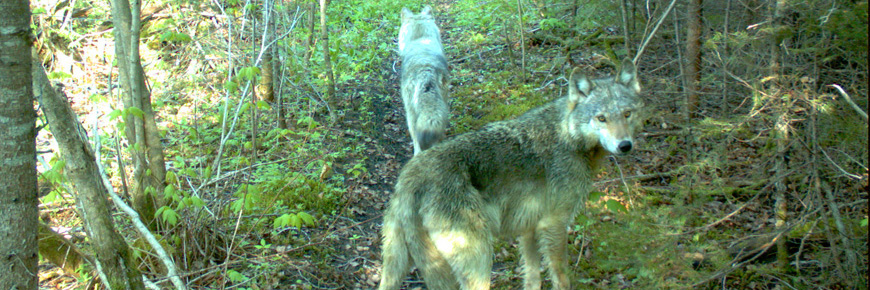
Grey wolf occupancy
Pukaskwa National Park
The grey wolf (Canis lupus) is an important component of boreal forest ecosystems; as a predator they influence ecosystem dynamics through top-down trophic cascades. They are also affected by bottom-up processes, meaning that changes in habitat can impact the distribution and size of prey populations, which in turn impact wolf survival. Thus, knowledge of wolf population dynamics may provide insight into larger ongoing ecological processes in the park. Fifteen motion-activated wildlife cameras have been deployed along Pukaskwa National Park’s coast since 2011 in order to detect wolves. Photos from the cameras are viewed, and independent occurrences of wolves (e.g. a photo or sequence of photos more than 10 minutes apart) captured by cameras are classified as ‘detections’. The data is used to determine wolf occupancy at each camera station, and then rolled up to determine occupancy in the coastal forests. From January to December 2015, wolves were detected 26 times at 8 of the 15 camera stations. Wolf occupancy across all sites was estimated as 62% for coastal forests in 2015, which is ‘good’ ecological status and an improved trend relative to 2014.
- Date modified :